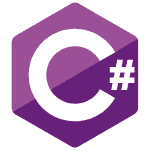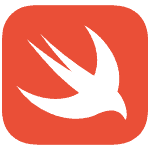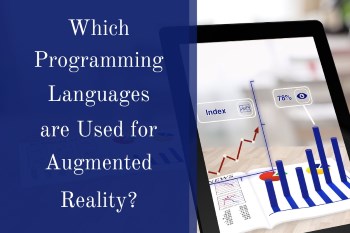Which Programming Languages are Used for Augmented Reality?

The world of virtual reality is a technological marvel, no doubt. Virtual reality is the term that indicates the creation of an artificial environment with the power of specialized software and hardware to provide user experiences in such a way that the user would believe that the artificial creation is real.
Now, the concept of AR (Augmented Reality) is a bit different than that. It’s a part of VR (kind of) but offers a different perspective. Instead of completely blending into a virtual world, AR overlays virtual objects on top of the already existing environment. Of course, the result will be visible from the display of the gadget.
A good example of AR can be Pokémon Go. Remember the craze when people used to go out in the field and search for Pokémon in the weirdest places? With the power of AR, it vastly improves the experience of Pokémon hunting. You can see your Pokémons blending with the real-life environment!
Do you aspire to build such amazing AR apps? Well, let’s dive into the virtual world and learn how to get started in the field of AR.
Difference between VR and AR
Despite VR and AR related, there is some fundamental difference between them.

The very first noticeable thing is the hardware requirement. For enjoying VR, you need exotic hardware like VR headsets (Oculus Rift, Samsung VR, you name it) and specialized computer system with powerful GPU and specialized software, etc. Since the starting, the tech became cheaper and cheaper. Yet, it’s quite costly to the majority of us. In fact, a reasonable VR experience would require spending hundreds of bucks for the hardware.
On the other hand, there are only a few requirements for AR. It’s more of a software thing rather than hardware thing. All you need is take the surrounding environment into account and do complex calculations to show an imposed virtual object on the real world. Here, the algorithm plays the most important role. Let’s talk with live examples. From the VR side, my choice would be Beat Saber. From AR side, all hail Pokémon Go!
In Beat Saber, you tap into the virtual world where all the blocks and obstacles will try to overwhelm you. Keep yourself alive with your virtual lightsabers. The game is fun, but you need to get the pricey hardware, wear it around your head and get accustomed to the controls.
In the case of Pokémon Go, install it in your smartphone and go on a journey around the world to catch your Pokémon and become the strongest Pokémon trainer! When you’re in the real world, the game will use the camera to capture the real world and impose virtual Pokémons and other objects. The game also allows interacting with virtual things (from your smartphone, of course). Pokémon Go is free and you don’t need any fancy VR headset or some other accessories.
AR development
As AR is massively dependent on the software end, the question is, how AR apps are developed? What components are necessary? What skills are at play? What programming languages are used in the field?
In the field of AR development, one of the primary skills is, of course, learning how to program. AR is extremely dependent on the intelligence of the software, so you have to be quite efficient and tricky with your algorithms and programming. Fear not; programming is, actually one of the most interesting and fun things one can do. It’s basically solving problems with a step-by-step process. If you’re good enough, programming can be highly dopaminergic for you!
Possibly the most important factor of AR is, it’s more viable than the traditional VR. The requirement for AR isn’t hefty like VR. You don’t need a fancy VR headset to enjoy AR contents. The mere fact that you can perform AR on just a simple smartphone is more than enough to prove that point! It doesn’t require hefty processing power as well. Take Microsoft HoloLens for example. With the help of AR, you can still see the real world as you would normally with additional digital overlays.
As AR is all about software, it’s more approachable than the traditional VR development. In fact, any programmer can jump right into the world of AR development. There are a number of frameworks and examples available to help you out. All you need is just spend enough time, get acquainted with the itty bitty stuff and present the world with your marvel! But wait; what programming language is needed here?
Interestingly, you can perform the task with almost all the major programming languages. As I mentioned earlier, there are different frameworks in different languages. If you’ve mastered any of the mainstream and widely popular programming language, there’s a pretty high chance that you can start learning AR development right away!
Best Programming languages for AR Development
AR requires incorporation of a wide range of concepts, for example, advanced computer vision, 3D modeling and of course, clever and efficient algorithms. Depending on your target platform, the preferred programming language will vary. However, the list of the most compatible ones includes C++ and C#.
The starting hype of AR ended up pursuing a number of devs into the development field. The dilemma, however, is to pick up the right direction. The field has been around for only a few years. Without large scale implementation and enough breakthrough, the progress to maturation is still slow. This is rough for the overall AR development cycle, especially for newbies in the field are the worst sufferers.
If your goal is to go into AR development, choose the most suitable programming paradigms. The world is full of programming languages, each with their own strengths and weaknesses.
Note: Remember, this list is only for reference. Use it to get hints which direction to go. The final answer should come from your own research, not from just my listing.
C#

C# is one of the incredibly powerful multi-paradigm programming languages with features like strong typing, functional, object-oriented, imperative, and component-oriented. C# is developed and maintained by Microsoft with its .NET initiative since 2000. Together with Unity, C# is currently the dominant force in the AR development field.
Unity is definitely the MVP in the field of VR! Unity uses C# as the way of programming Unity apps. For example, over 90% of the HoloLens apps out there are powered by Unity and C#. As long as your focus is on VR and AR, even MR, Unity is the master. With the power of C#, it’s the most stable and future-proof path to follow.
C++

C++ itself is one of the legends in the field of programming. It’s been around for decades! C++ came into existence by the hand of Bjarne Stroustrup. The idea was to introduce OOP with C. Now, it’s one of the dominant forces in programming that serves a multitude of purposes.
For AR development, C++ is another powerful candidate. Unreal Engine fully is fabricated on C++. In fact, the Unreal Engine is one of the finest open-source projects out there! If you didn’t know, Unreal Engine is used for creating a number of finest games, for example, Biomutant, Crackdown 3, Darksiders 3, Days Gone and others.
Unreal Engine is another strong way of entering the field of AR development. Google’s ARCore SDK is readily available for Unreal Engine. There are also other SDKs for like Magic Leap, Handheld AR, etc. for Unreal Engine.
Java

Thanks to the robust nature of the language, Java is adored and adopted by programmers all over the world. It’s so impactful on the world of programming that it’s now the textbook definition of object-oriented programming. Its robust nature makes Java an excellent choice for AR development, for example, neural networking, language processing, and others. Java comes up with a built-in 3D API that allows easier testing with different AR components which you can play around with.
If you didn’t know, Java is one of the official programming languages for Android apps! Yes, Kotlin replaced Java as the #1 programming language for Android, but it’s still one of the best ways to get started. Popular AR frameworks like Google ARCore is readily available for Java developers to get started!
JavaScript

JavaScript is another interesting candidate for the purpose. It’s one of the most adaptable programming languages, believe it or not. At first, it may sound weird that a web tech is in the complex field of VR. However, if you closely take a look at the recent trends of tech, JavaScript is always a hot topic. It’s slowly creeping its way into a lot of fields other than the web, for example, creating mobile apps and powerful desktop apps (especially backend development). Check out the JavaScript creep in the tech. In fact, for AR development, devs also prefer something familiar like JavaScript! JavaScript VR apps are suitable for all the popular VR gadgets, for example, Oculus Rift, HTC Vive and others!
If you’re familiar with JavaScript, then the door of AR is open right away! All you need is get started with a suitable framework. For example, A-FRAME by Mozilla is a powerful candidate that’s used by giant corporations like Disney, Google, Toyota, Sony, Samsung, and even NASA!
Other powerful frameworks include AR.js, aframe-xr etc. However, there are other necessary components in the mix. For example, interactive 3D graphics, and familiarity with Three.js, etc. WebGL is another important element for offering better performance.
Swift

Swift is the official programming language for iOS devices. It’s not a super popular programming language like others because of the platform barrier. However, if you’re an experienced Swift programmer, you can get started by developing AR apps for iOS devices right away!
ARKit is the official AR SDK from Apple. ARCore from Google is also available for iOS (with Unity).
3D
AR/VR development is not just sheer programming. It’s more dependent on your mastery of 3D. In fact, it’s not even that different than 3D game development. The reason is, both AR/VR and game development requires generating and interacting with immersive worlds in real time.
That’s why before jumping into AR development, you have to have enough skill in 3D modeling, scanning, 3D games engines, geometry and math, and associated SDKs and programming languages.
Is AR development profitable?
With all the requirements, AR development is definitely not cheap. So, how profitable is learning AR development?
The field of VR/AR isn’t limited to fancy games like Pokémon Go. The field of VR is far more intensive and useful than it appears to be. Education, business, training, modeling and a number of other fields benefit from the tech.
For example, the healthcare industry can benefit from VR. It can be used to train medical practitioners with critical skills like surgical training. With the help of AR, surgeons can perform surgery more accurately and precisely with the real-time data. There are already some tools for fitness training.
As of the military sector, virtual/augmented reality is more efficient for training soldiers in dangerous situations. The use of VR offers a safer environment to practice the dangerous situations with little to no injury. How about VR/AR in education? A large number of students can interact with the virtual world and learn in an immersive 3D environment.
It’s also possible to use VR and check the viability of a building before construction. For creative artworks, VR is like a bliss. For example, Google’s Tilt Brush lets you paint in a whole new perspective. As of the game, we already know the intensity. Pokémon Go is always a prime example. Other games include Ingress, ARrrrrgh, King of Pool, etc.
The implementation of VR/AR is on the way. It’ll take some time for all the possible fields to use the power of AR to the fullest.
Conclusion
AR is more than just programming language. While programming language plays a big role, it’s not the final answer. The fact is, AR requires heavy workflow with a 3D environment. You need to have a good grasp over 3D modeling, geometry, math, and other 3D skills to fully implement AR.
Your platform of choice is also a major factor. While the 3D skills will be applicable for all the platforms, your platform of choice will dictate which programming language and SDK to pursue. The decision will ultimately decide the time requirement, the complexity of the AR app in question and others. Fixed engines like Unity, Unreal, etc. also limit the users to the specific language of the engine.
That being said, with all the factors, it’s up to you which path to follow. AR has matured enough to offer a solid career. It’s still not being used at a large scale, but it’s the hidden gem that’s worth investing. For example, remember mobile development back in 2006? Currently, AR is in a similar state. As far as the trend indicates, it’ll be the next revolution in tech.
Cheers!







